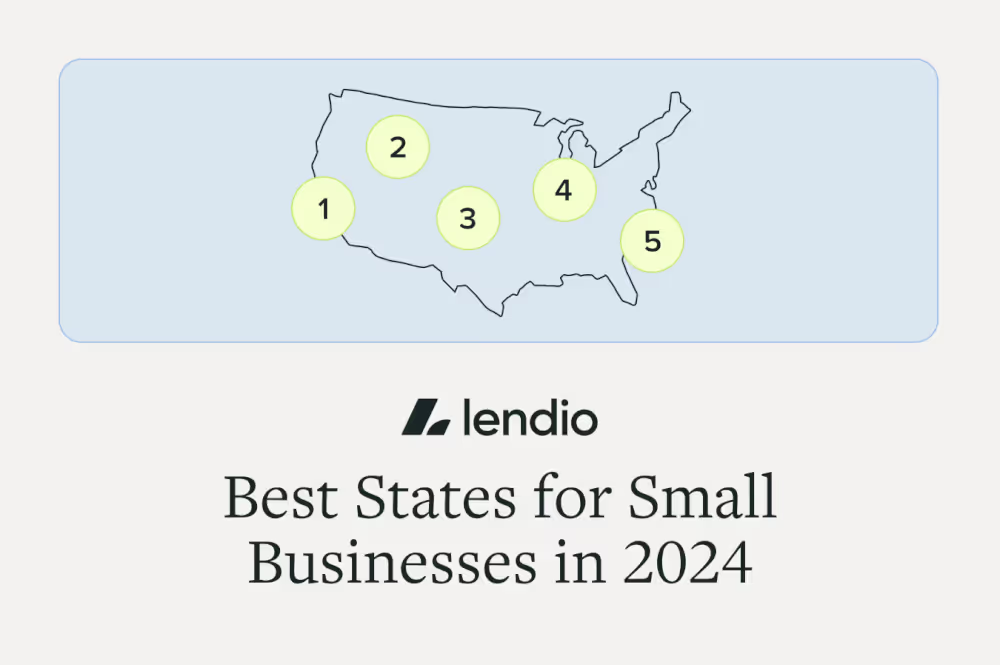Multiple studies have found that small business owners are happier—and healthier—than traditional employees. Being your own boss can be stressful at times, but many people find the process to be exhilarating and more rewarding.
The truth is, though, there are always going to be challenges to starting a new business—especially in your first year of operation. Here, we’ll highlight the common challenges you need to be aware of when starting a business, and how to best prepare for them.
Common challenges of starting a business you should prepare for
There are a variety of intimate details across funding, taxes, profitability, and sellability, that you won’t be able to truly grasp until you’re in the throes of running your business—since they require deep, timely context to do so.
Once the ball is rolling, you’ll need to prepare to face the following.
1. Having enough funding to maintain and grow operations
Securing capital is one of the biggest challenges for new business owners.
For many business owners, the need for cash is a catch-22: you need money to pay for equipment and inventory, but you can’t make money without the equipment and inventory. As a result, would-be entrepreneurs turn to various funding methods to get the capital needed to cover expenses until they start generating revenue from the business itself.
You have multiple options available as you seek funding for your business. Each of these options comes with different pros and cons depending on your budget and goals for growth.
- Seek a business loan. If you lack the needed funds to start your business, work with a financial institution to secure a business loan. You can work with these creditors on a reasonable monthly payment plan with flexible interest rates and terms. Lendio curates multiple loan types for business owners to review and apply for.
- Work with private investors. Angel investors and venture capitalists are always looking for the “next great idea.” Some investors won’t expect payment for a few years as your business grows, giving you the flexibility you need to spend money. However, they may want regular reports on your performance and can also request a say in the decision-making process because of their shareholder status.
- Bootstrap your business. Bootstrapping occurs when you pull funds from your own pocket to start a business and operate that company as lean as possible. With this type of funding, you won’t have additional fees or interest to repay—but few people have the liquid capital on hand to cover all of their costs for the first few years.
- Crowdfund from the community. Crowdfunding has become increasingly popular to raise money for your business. With this model, dozens of people from the community donate to your business idea. You can either pay these people back or offer discounts for donors who support your company.
You’ll likely need a combination of options to fund your business. For example, you may start by self-funding the business and reaching out to friends, family, and colleagues to become private investors over time.
Once you’ve established some fluid business, you can begin exploring small business loans and private investors to fuel more accelerated growth.
2. Creating a Realistic Operating Budget
It’s estimated that 82% of businesses fail due to poor cash management—so take a proactive approach to managing your money within your first year.
Creating and sticking with a budget is an important step. This process includes not just setting a budget, but also understanding when you need to adjust your spending.
The first thing to do: get organized. Ensure that you have a process for tracking your expenses and labeling each purchase so you can sort through them later. (This will also be immensely helpful during tax season.) Once you have transparency, you can start adjusting your levers and setting budget goals and expense expectations.
Developing a business operating budget isn’t that much different from managing your personal expenses. If you want to save money, you review where your income goes and learn what can be cut and what needs to stay.
One thing to keep in mind during this budget development process: your priorities and needs are going to change. You’ll need to spend more, for example, during peak seasons to advertise more or scale inventory. That’s okay, for now.
If developing and managing a budget still feels intimidating, consider consulting with an accountant or looking into budgeting software.
3. Paying taxes accurately and strategically
Filing taxes is a source of stress for many Americans, even those who have full-time employment with a single company.
Some people are afraid of underpaying and being audited, while others feel confused by the IRS verbiage—so they rush through their forms or hand off their documents to an accountant.
As you launch your small business, taxes will become more important—and more complex. You’ll have to pay different amounts if you’re self-employed, and you’ll have to maintain a list of deductions to report as business expenses.
Even when you have these nuances figured out, you may come across other challenges and requirements as you begin to scale and hire employees.
Tracking deductions is one of the hardest—and most important—steps in tax preparation. The government frequently creates new rules for what can be deducted and by what amount, so it can sometimes feel like trying to hit a moving target.
However, there are some standard deductions (marketing expenses, insurance costs, education, etc.) that you can write off. As you begin to file your taxes, identify which expenses can qualify as deductions in order to reduce how much you need to pay.
The good news: if you take time in your first year to categorize your expenses correctly and develop good bookkeeping habits, you can put yourself in a great position for tax season.
4. Optimizing your business for profitability
As you grow your business, you’ll discover that you have multiple levers to pull to increase profitability. You can save money by reducing costs, or you can adjust your products and prices to increase your margins.
Companies make minor adjustments to their product lines frequently. They debut new items to appeal to customers and change their products to meet customer demand (like fast-food chains going “all-natural”).
Within the first few months of opening, you may decide that you need to change up your products to help your business succeed. Fortunately, there are many ways to do this. A few options at your disposal include:
- Eliminating products and services that don’t sell (does your pizza restaurant really need a hamburger on the menu?)
- Eliminating items with low profit margins (high-cost items, products that take a long time to make, or items from vendors with difficult contracts, for example)
- Launching new items based on trends and customer demand (what brunch restaurant doesn’t offer avocado toast?)
- Creating product bundles to sell high-margin items along with low-margin products
- Negotiating better deals with your vendors to pay less for goods
- Adjusting your materials sourcing and costs to pay less before assembling your products
- Investing in technology to speed up the production process and scale your abilities
As you can see, many factors affect the profitability of your business. You have the final price that you list your product to sell but also the costs of labor and materials to assemble these products.
Over your first year in business—and likely beyond—you will need to continue to adjust and optimize your products or services, as well as the resources invested in them, to improve your bottom line. This should always be a focal point of your business.
5. Building an effective marketing plan (that’s optimized for long-term)
In the same way that your products and services will likely change as your business grows, so will your marketing strategy. In fact, as you consider how you promote your business, you might develop a 3-part plan: pre-launch, launch, and post-launch/maturation.
During the pre-launch process, your main focus may be on name recognition and making customers aware that your business exists.
The goals for your marketing efforts will likely focus on maximizing your reach (getting in front of a large number of people) and connecting with potential customers on social media and via email so you’re top-of-mind when you eventually open.
When your business launches, your marketing goals will change, however.
Once your business starts to mature and you develop a healthy customer base (typically 6 months to a year in operation), you can adjust your marketing materials for long-term success. At this point, you’ll have accrued some data over time, and be able to start optimizing for your ideal customer profile.
Your marketing campaigns will then require you striking a balance between retaining the customers you brought in during your launch and encouraging new ones to try your brand.
Some business owners seek marketing firms that specialize in business openings and product launches. These experts can make sure your business gets noticed when you open, ensuring that you hit the ground running.
6. Hiring the right employees and growing your team
Once your business starts growing and your customers fall in love with your products, you can start to expand. At this point, you can begin to delegate more and more across every aspect of your business.
It’s during this time that you might considerexpanding your existing staff with new members.
Neil Patel created a useful guide for determining when your company is ready for a new hire. His main indicator: you’ve had to turn down work from customers or can’t fill the existing demand for your products or services.
Turning down work doesn’t always mean your customer will come back when you’re ready for them. You could lose customers in the long run if you can’t scale your efforts to meet their needs.
Think about the cost of acquiring a new customer versus retaining one. Once you start limiting your existing customers or turning leads away, your company is losing money while its marketing costs are increasing. Don’t think of your new hire as an additional expense but rather an asset to help you scale.
Fortunately, there are multiple options for taking on additional talent. You can contract out work until you have enough demand to bring on a full-time employee. You can also take on paid interns to help with basic work and then train them to become staff. Finally, you can hire part-time work with the goal of bringing them on full time once your business grows into it.
Remember, taking on a new hire isn’t just an expense or opportunity for growth—they’ll also take time from you. You’ll need to train them, manage them, and work alongside them to meet the demand of your customers.
Additional challenges entrepreneurs face
While this guide has covered many of the big obstacles that startup businesses face, you’ll also need to overcome several miscellaneous challenges during your first year. A few common tasks and mishaps that business owners face include:
- Creating company documents and infrastructure. Within the first year, you’ll likely create a company handbook as well as several policies and rules for how your business operates.
- Investing in the right tools and software. It’s hard to know what’s on the market and able to help you, from choosing a good financial management app to setting up widgets and plug-ins for your website.
- Finding quality networking opportunities and forming partnerships. It’ll take time to find networking groups within your community that can benefit you. However, once you make these connections, you can grow your business.
- Developing safety procedures and cybersecurity training. You’ll need to make sure your employees are safe—along with your digital assets and sensitive financial information.
- Identifying your competitors and your relationship with them. Some companies work well alongside their competition, while others face challenges—and even direct attacks.
- Establishing a work-life balance. Opening a business is a marathon, not a sprint. Learn how to take time off to recharge so you can move your business forward.
Each of these challenges can be overcome with creative problem-solving and a determination to move your company forward.
Launching your business with an eagerness to learn
Each new business owner will face unique challenges and roadblocks during the first year. For some people, the idea of managing the company’s ledgers and tax forms is overwhelming. For others, managing employees or handling customer feedback can create stress.
However, if you can identify and admit what you need to learn, you can take steps to resolve mitigate any risks. The best way to survive your first year in business and to continue growing for years to come is always to be eager to learn—knowing that some of that learning is going to come from making mistakes.





































.png)








